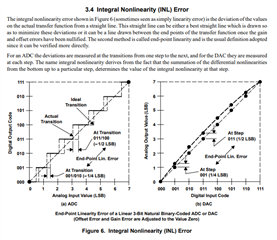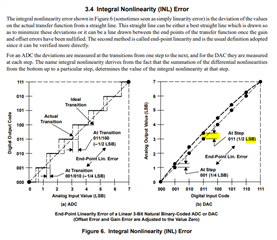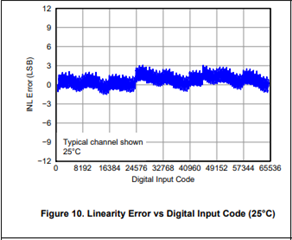Other Parts Discussed in Thread: DAC8562
Dear Specialists,
My customer is considering DAC8162 and has a question.
I would be grateful if you could advise
---
I have a question about the datasheet P.3 5 Device Comparison Table.
1)
Regarding the integration error, the DACxx6x series consist of resistor string method.
In this case, what causes the errors to accumulate?
I think that the resistor string DAC basically does not generate an integral error(cumulative error)
2)
In case of DAC8562, the integration error is ±12.
I think that this number 12 corresponds to the lower bit 3 and 2.
Why is the lower bit b1,0 ignored?
If the maximum integral (cumulative) error is the lower Bit b3,2, then b1,0 should also be affected, and the maximum would be ±15.
---
I appreciate your great help in advance.
Best regards,
Shinichi





